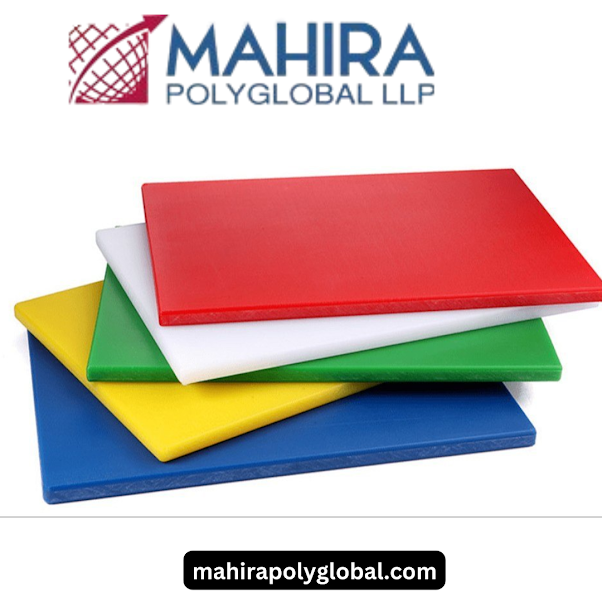The Multifaceted World of HDPE Sheets: Unveiling the Versatility and Benefits
High-Density Polyethylene (HDPE) sheets have become an integral part of various industries, offering a unique combination of durability, versatility, and sustainability. These plastic sheets have evolved significantly over the years, catering to an array of applications, from construction and agriculture to packaging and manufacturing. This Mahira Polyglobal LLP delves into the world of HDPE sheets, highlighting their properties, advantages, and potential uses, as well as discussing their environmental impact and future prospects.
Understanding the Composition and Properties of HDPE Sheets Plastic
HDPE sheets plastic are made from high-density polyethylene, a type of thermoplastic polymer characterized by its high strength-to-density ratio. This unique property makes HDPE sheets more durable and resistant to impact than other types of plastic. During the manufacturing process, ethylene gas is polymerized to create long molecular chains, resulting in a solid, robust material. The non-porous surface of HDPE sheets prevents the growth of bacteria and other microorganisms, making them ideal for applications in the food industry.
Applications of HDPE Sheets Plastic
The Plastic HDPE Sheetss are widely used in various industries, including construction, agriculture, packaging, and manufacturing. In construction, HDPE sheets are used as geomembranes for landfills and water containment systems due to their chemical resistance and durability. In agriculture, they are used as mulch films, silage covers, and greenhouse sheets to improve crop yields and reduce water consumption. HDPE sheets are also used in packaging applications, such as containers and pallets, due to their lightweight and shatter-resistant properties.
Environmental Impact of HDPE Sheets Plastic
One of the significant advantages of HDPE sheets plastic is their recyclability. They can be collected, processed at recycling facilities, and converted into new HDPE products, minimizing environmental impact. HDPE sheets are also made from renewable resources and can be produced with minimal energy consumption. However, the production process for HDPE sheets involves the use of non-renewable resources and can generate greenhouse gas emissions. Therefore, it is essential to consider the environmental impact of HDPE sheets plastic and strive to reduce waste and promote recycling.
Advantages of Using HDPE Sheets Plastic
HDPE sheets plastic offer several advantages over other materials, including durability, resistance to chemicals and abrasion, and ease of maintenance. They are also lightweight, making them ideal for transportation and storage. HDPE sheets are also cost-effective and can be customized to meet specific application requirements. Additionally, they are resistant to UV rays and weather conditions, making them suitable for outdoor applications.
Maintenance, Longevity, and Handling of HDPE Sheets Plastic
HDPE sheets plastic require minimal maintenance due to their non-porous surface and resistance to chemicals and abrasion. They can be easily cleaned with soap and water and can withstand exposure to extreme temperatures. However, they should be handled with care to prevent damage. The lifespan of Plastic sheet hdpe depends on the specific application and usage conditions. With proper care and maintenance, HDPE sheets can last for many years.
Future Directions for HDPE Sheets Plastic
The future of HDPE sheets plastic looks promising, with ongoing innovations pushing the boundaries of their applications. One exciting trend is the incorporation of smart technologies into HDPE products, such as sensors and RFID tags. This can enable real-time monitoring of temperature, humidity, and other environmental conditions in various applications. Another area of focus is the development of biodegradable HDPE sheets plastic made from renewable resources.
Conclusion
In conclusion, Sheet of hdpe offer a unique combination of durability, versatility, and sustainability, making them an integral part of various industries. Their potential applications are vast, from construction and agriculture to packaging and manufacturing. With their non-porous surface, resistance to chemicals and abrasion, and ease of maintenance, HDPE sheets plastic are a popular choice for many applications. As the demand for sustainable materials continues to grow, HDPE sheets plastic will play an increasingly important role in reducing waste and promoting recycling.
Frequently Asked Questions
1. Can HDPE sheets be used in outdoor applications?
Yes, HDPE sheets are highly resistant to UV rays and weather conditions, making them ideal for various outdoor applications.
2. Are plastic HDPE sheets safe for food contact?
Yes, HDPE sheets are non-toxic and safe for food contact.
3. How can HDPE sheets be recycled?
HDPE sheets can be recycled through established recycling programs.
4. What thicknesses do HDPE sheets come in?
HDPE sheets are available in a variety of thicknesses, typically ranging from 1/16 inch to 1 inch or more.

.png)

.png)
Comments
Post a Comment